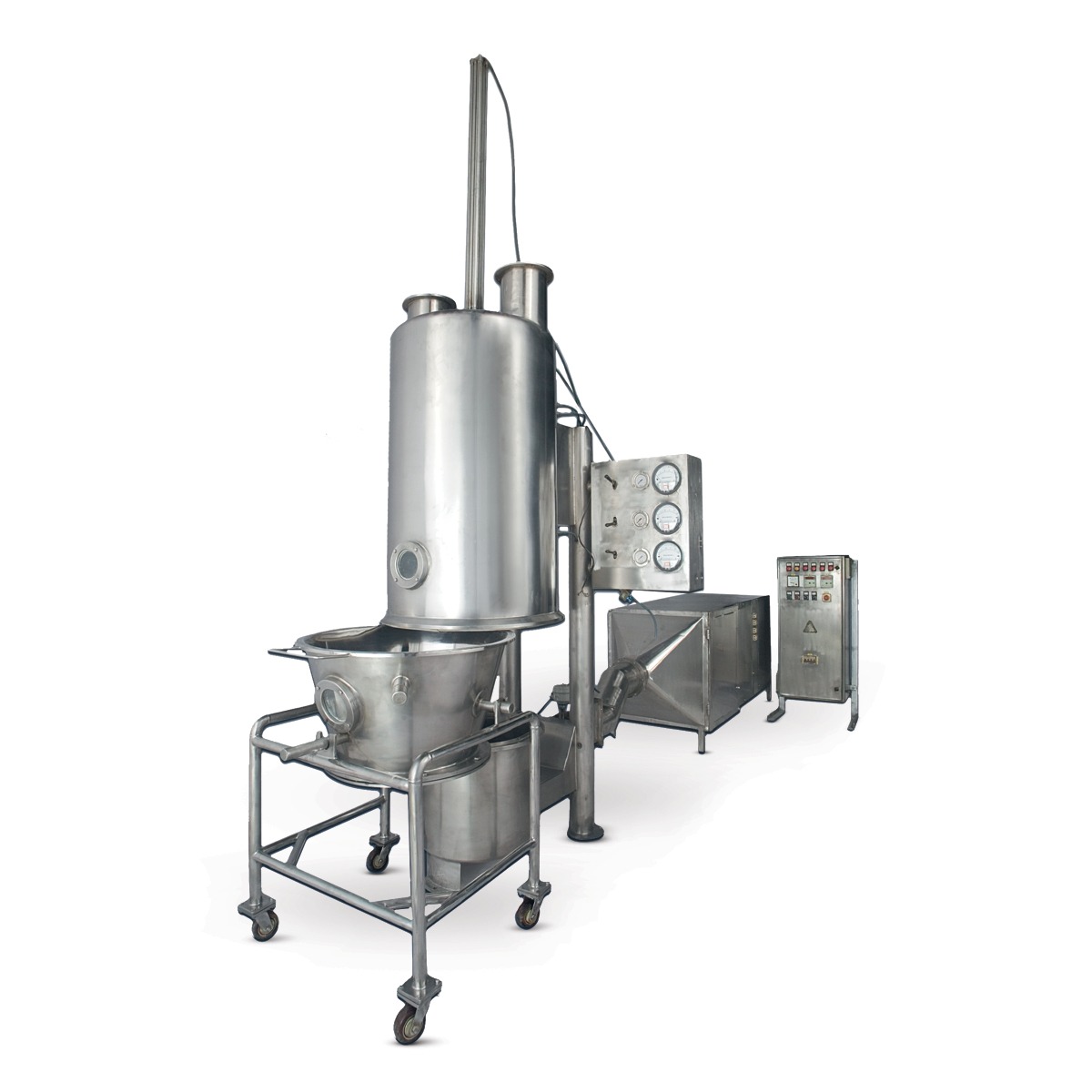Fluid Bed Dryers are used to dry, wet granulated materials attained after the granulation process. The material is dried through the combination of (a) moisture diffusion from the inside of the granules and (b) the removal of moisture by forced-air convection. In this unit operation, the granulated material is fluidized by hot & dehumidified air to achieve efficient heat and mass transfer.
In agriculture, ensuring the quality and longevity of harvested crops and processed materials is of paramount importance. One innovative solution that has gained traction in this industry is the fluid bed dryer. This specialized drying equipment offers a unique and efficient approach to drying wet, granulated materials obtained after the granulation process.
Applications in the Agriculture Industry
Fluid bed dryers have found widespread applications in the agriculture industry, catering to a diverse range of products. From grains and seeds to herbs and spices, this versatile drying equipment can handle a variety of granulated materials, gently fluidizing them while accelerating the drying process without compromising their integrity.
As the agricultural sector continues to prioritize efficiency and product quality, fluid bed dryers offer a powerful solution. By embracing this innovative technology, producers can stay ahead of the curve, maximizing output while ensuring the preservation of their valuable agricultural products.
- Grain Drying: Fluid Bed Dryers are commonly used for drying grains such as rice, wheat, corn, and barley. These dryers help reduce the moisture content of grains, preventing spoilage and ensuring longer shelf life.
- Seed Drying: Seeds are essential agricultural products that require careful drying to maintain their viability and quality. Fluid Bed Dryers provide a gentle drying process that helps preserve the germination rate and quality of seeds.
- Herb Drying: Similar to spices, herbs require careful drying to preserve their flavor and aroma. Fluid Bed Dryers provide an efficient drying solution for herbs, ensuring that they retain their quality.
- Vegetable Drying: Vegetables such as onions, garlic, and peppers are often dried for use in various food products. Fluid Bed Dryers offer a gentle drying process that helps retain the nutritional value and color of vegetables.
- Fruit Drying: Drying fruits such as bananas, apples, and mangoes helps preserve them for longer periods. Fluid Bed Dryers provide a controlled drying environment that helps maintain the flavor and texture of fruits.
- Forage Drying: Forage crops such as hay and alfalfa are dried to reduce moisture content and prevent Mold growth. Fluid Bed Dryers offer a quick and efficient drying solution for forage crops, ensuring their quality and nutritional value.
- Biomass and Agricultural Waste Drying: Fluid bed dryers play a crucial role in the drying of biomass materials and agricultural waste. This application encompasses the drying of crop residues, such as stalks, leaves, and husks, as well as animal manure. The efficient drying process facilitated by fluid bed dryers prepares these materials for subsequent use in energy production or composting. By reducing the moisture content, fluid bed dryers ensure that biomass and agricultural waste can be handled and stored efficiently, minimizing issues related to excessive moisture.
Conclusion:
Fluid bed dryers have become essential tools in the agriculture industry, providing an efficient and versatile drying solution for a wide range of agricultural products. From grains and seeds to herbs, spices, vegetables, and fruits, these innovative systems ensure optimal drying while preserving quality, flavour, and nutritional value. Additionally, fluid bed dryers contribute to sustainable practices by facilitating the drying of biomass materials and agricultural waste for energy production and composting. As the agricultural sector continues to prioritize efficiency and product preservation, the adoption of fluid bed dryer technology positions producers at the forefront, enabling them to meet growing demands while maximizing output and minimizing waste. This cutting-edge drying solution represents a significant stride toward a more sustainable and productive agricultural future.





